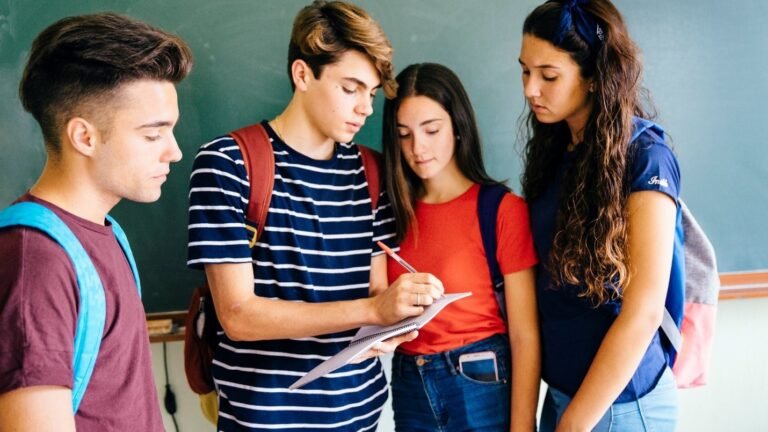The Impact of Student Population Growth on US Public High Schools: A Closer Look
The issue of student population growth is a significant concern for educational institutions around the world. As the global population continues to increase, so does the number of students seeking education at all levels, from primary to tertiary. This surge in student numbers has put immense pressure on schools, colleges, and universities to accommodate and provide quality education to a growing number of students. The impact of this growth is felt across various aspects of the education system, from classroom size and teacher workload to school infrastructure and resources. In this article, we will explore the current trends in student population growth, its effects on the education system, and the challenges it presents. We will also discuss strategies for managing this growth and provide recommendations for addressing this issue.
Current Trends in Student Population Growth
The current trends in student population growth are evident across all levels of education. In primary and secondary schools, there has been a steady increase in the number of students enrolling each year. This is due to factors such as population growth, improved access to education, and government initiatives to promote universal education. At the tertiary level, colleges and universities are also experiencing a surge in student numbers, driven by a growing demand for higher education and an increasing number of young people seeking to further their studies. Additionally, international student enrollment has been on the rise, with more students choosing to study abroad for a global education experience. These trends have led to overcrowded classrooms, overworked teachers, and strained resources in educational institutions.
The impact of student population growth is not limited to a particular region or country but is a global phenomenon. Developing countries are experiencing rapid population growth, leading to a surge in student numbers in schools. Meanwhile, developed countries are also grappling with an influx of students, both domestic and international, seeking higher education opportunities. This has created a complex and challenging situation for educational institutions worldwide, as they strive to accommodate and provide quality education to an ever-growing student population.
Effects on Classroom Size and Teacher Workload
One of the most immediate effects of student population growth is the increase in classroom size and teacher workload. As the number of students in a classroom grows, it becomes increasingly difficult for teachers to provide individual attention and support to each student. Larger class sizes also make it challenging for teachers to maintain discipline and create an engaging learning environment. This can lead to a decline in the quality of education and student outcomes.
Furthermore, the increase in student numbers puts a significant strain on teachers, who are already facing heavy workloads. With more students to teach, assess, and support, teachers are often overwhelmed and find it difficult to meet the diverse needs of their students. This can lead to burnout and decreased job satisfaction among educators, ultimately impacting the quality of teaching and learning in the classroom. Additionally, the demand for qualified teachers has also increased with the rise in student population, leading to shortages in some regions and subjects.
Impact on School Infrastructure and Resources
The surge in student population has also put pressure on school infrastructure and resources. Overcrowded classrooms and limited facilities can hinder the learning experience for students and make it challenging for teachers to deliver quality education. Schools may struggle to provide adequate resources such as textbooks, technology, and learning materials to meet the needs of a growing student population. Additionally, there may be a strain on essential facilities such as libraries, laboratories, and sports facilities, impacting the overall educational experience for students.
Moreover, the increase in student numbers can lead to a need for additional infrastructure such as new classrooms, buildings, and facilities. This requires significant investment from educational institutions and governments to expand and upgrade existing infrastructure to accommodate the growing student population. However, limited funding and resources can make it difficult for schools to keep up with the demand for new infrastructure, leading to overcrowded and inadequate learning environments.
Challenges in Providing Quality Education
The challenges posed by student population growth extend beyond classroom size and infrastructure to impact the overall quality of education. With larger class sizes and limited resources, schools may struggle to provide personalized learning experiences and support for students with diverse needs. This can lead to disparities in educational outcomes and hinder the academic progress of some students. Additionally, overworked teachers may find it difficult to deliver high-quality instruction and support to all students, impacting their learning experience.
Furthermore, the increase in student numbers can also lead to challenges in maintaining academic standards and ensuring that all students receive a quality education. Schools may face difficulties in monitoring student progress, providing timely feedback, and addressing individual learning needs due to the sheer volume of students. This can result in a decline in academic performance and student engagement, ultimately impacting the overall quality of education provided by educational institutions.
Strategies for Managing Student Population Growth
To address the challenges posed by student population growth, educational institutions can implement various strategies to manage this issue effectively. One approach is to invest in technology and innovative teaching methods to enhance the learning experience for students. This can include using digital resources, online learning platforms, and interactive tools to support personalized learning and engage students in their studies. Additionally, schools can explore flexible scheduling options, such as staggered start times or blended learning models, to accommodate larger student numbers while maintaining smaller class sizes.
Another strategy is to invest in professional development for teachers to equip them with the skills and knowledge needed to effectively manage larger class sizes and diverse student needs. This can include training on classroom management techniques, differentiated instruction, and assessment strategies to support teachers in delivering high-quality education despite increased workload. Additionally, schools can explore partnerships with community organizations, businesses, and other educational institutions to expand access to resources and facilities for students.
Conclusion and Recommendations
Student population growth presents significant challenges for educational institutions worldwide, impacting classroom size, teacher workload, school infrastructure, and the overall quality of education provided. However, by implementing effective strategies such as investing in technology, professional development for teachers, and partnerships with external organizations, schools can effectively manage this issue and provide quality education to a growing number of students. It is essential for governments, policymakers, and educational leaders to prioritize investment in education infrastructure and resources to accommodate the increasing student population while maintaining high academic standards.
To address this issue effectively, it is crucial for stakeholders to work collaboratively towards sustainable solutions that support the needs of both students and educators. By prioritizing investment in education infrastructure, supporting teacher professional development, and leveraging technology and partnerships, educational institutions can effectively manage student population growth while providing quality education for all students. It is also important for policymakers to consider long-term planning and investment in education to ensure that schools have the resources and capacity to accommodate future population growth. By taking proactive measures now, we can ensure that all students have access to quality education and opportunities for success in the future.







